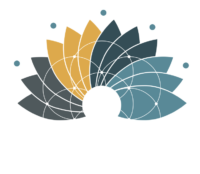 Today’s blog is the next in the authentic relating series where I’ve been using the tools of NVC (Non-Violent Communication) and NLP (Neuro-Linguistic Programming) to build authenticity, harmony and conscious communication skills to allow you to create authentic relationships with yourself and others. In today’s episode, Connecting Authentically, I will guide you in a meditation to assist in revising old patterns that hinder you from connecting authentically from a heart-based, vulnerable and empowered place.
Today’s blog is the next in the authentic relating series where I’ve been using the tools of NVC (Non-Violent Communication) and NLP (Neuro-Linguistic Programming) to build authenticity, harmony and conscious communication skills to allow you to create authentic relationships with yourself and others. In today’s episode, Connecting Authentically, I will guide you in a meditation to assist in revising old patterns that hinder you from connecting authentically from a heart-based, vulnerable and empowered place.
Key Topics Include:
- Learn how to keep perspective in any situation to support your ability to relate authentically.
- Experience an NLP (Neuro-Linguistic Programming exercise called perceptual positions to explore and resolve any conflict you are experiencing
- Apply the NVC (Non-Violent Communication) formula to this conflict to understand the specific issue, feelings associated, unmet needs and formulate a compassionate request to bring harmony and resolution.
There are 5 key factors in being able to connect authentically in all your relationships, including the relationship you have with yourself:
- Be authentic with yourself by embodying your truth.
- Take responsibility for your feelings which includes understanding your triggers from past conditioning.
- Be skilled at identifying your needs and the needs of others who you want to authentically connect with.
- Have compassion and understanding for others and how they create their experience of reality
- Use conscious communication skills to establish rapport and foster genuine connections.
I have covered these points in the previous blogs of the Authentic Relating series, so feel free to catch up if needed by reading those.
You may also listen to this and previous episodes in my Healing Codes Podcast. The episode associated with this blog is given below.
These skills allow you to stay compassionate, and self-empowered and maintain the full presence of being needed to connect authentically in life, especially when facing conflicts, both within yourself or with others.
Being able to keep perspective in any situation is a valuable tool in being able to activate the key factors in authentic relating. Perspective is about being able to take a bigger picture view to include the feelings and needs of others as well as your own. It helps to not take things personally, blame others or lose a heart connection which is essential for creating and maintaining authentic connections.
A really useful tool to be able to do this is one called perceptual positions, from the NLP (Neuro-Linguistic Programming) toolbox that uses the skills of association and dissociation to get perspective on a situation from all sides including the neutral or objective observer. In a moment I’ll take you through a guided meditation to practice this exercise. Before we do this, take a moment to think of a situation where you experience a conflict that diminishes your self-empowerment, and derails you from staying authentic, grounded and compassionate.
This can be either an inner conflict between different parts of yourself for example: Part of me wants to eat an ice cream and another part of me wants to eat more vegetables. Or a conflict with someone else where you felt misunderstood or disconnected from your authentic self. For starters, choose an example that has a minimal emotional charge so that you can get the hang of it.
Feel free to repeat the meditation as you become more skilled with it for situations with a greater emotional charge. For example, try to choose an example with emotions that register about a 3 out of 10 for the first time. You can then increase more emotionally charged examples as you wish. The reason for this is when we have overwhelming emotions it is a sign that we are experiencing a trigger from childhood that causes us to regress to a younger, more unresourceful age. Depending on how deeply this trigger affects you, or if it has caused past trauma, it may be best to work with these while a skilled therapist holds the space for you. In the next episode, I’ll guide you through a meditation to explore and work with childhood triggers that hinder you from achieving your desired state of being.
So now let’s begin this journey of activating authentic relationships through getting a clearer perspective on the situation you have chosen to work with. You can do this exercise in your mind’s eye or by setting up three chairs to represent the three positions of awareness we’ll explore in this meditation. This exercise is best served using 3 chairs you can move between, allowing you to release the energy of each position in between. If you don’t have chairs available, you can use three pieces of paper or objects to represent the different positions. If you wish to do the meditation this way, take the time now to set up the chairs or objects so that 2 directly face each other and the third faces the other two, the midpoint between them. Assign each one with a different perspective. The two facing each other are the two aspects of the internal or external conflict you want to explore. I will now refer to these as position 1 and position 2. The third, placed midpoint between the other two is the observer position, or position 3.
So, for example, for an internal conflict position 1 would be one aspect of yourself and position 2 would be the other aspect of yourself. Position 3 serves as the neutral observer. If you are working with a conflict with another person, position 1 would be your perspective, position 2 is the other person’s perspective and position 3 is the neutral observer.
If you wish to do this meditation remaining still when I give the prompt to move into the next position, move your awareness to that position.
Create a space that is quiet and distraction-free. Have a notebook nearby to capture any thoughts, observations or ah-ha moments. You can pause this any time you need more time to complete a task.
Now, let’s begin. Take a few deep breaths to centre yourself. Allow your mind to come to rest, letting any thoughts about the past or future go like a balloon floating away into the wind. Find a place of stillness within as you allow your breath to flow freely and naturally.
Begin in position 3, where you can get a sense of the perspectives in position 1 and position 2. Observe without thought or judgement. Hold a neutral frame of mind with compassion and gratitude for each aspect in the other 2 positions.
Now move into position 1. Get a sense of what it’s like here. What are the thoughts, feelings, and sensations in the body? What are the emotions present? What is important to this part? What are the needs that are not being met that underly the feelings of conflict?
How does this aspect view the other in position 2? What is the quality of the connection between this position and position 2? What is a specific observation this part can identify that has caused the conflict with the other position? Formulate it in the format of…when this happened, I felt this emotion. What does this part want to request from the other position? When this thing happened, I brought forward the feeling of. What I need is… My request of you is…
Take a moment to write down your observations and the components of the request. When you did this, I felt, my need is … and my request for the future is….
Now step out of position 1. Release the energy of this position by clearing the mind and moving the body. What is your phone number backwards? Make cross-lateral movements that cross the midline of your body. This is called a break state.
Now step into position 2. Get a sense of what it’s like here. What are the thoughts, feelings, and sensations in the body? What are the emotions present? What is important to this part? What are the needs that are not being met that underly the feelings of conflict?
How does this aspect view the other in position 1? What is the quality of the connection between this position and position 1? What is a specific observation this part can identify that has caused the conflict with the other position? Formulate it in the format of…when this happened, I felt this emotion. What does this part want to request from the other position? When this thing happened, I brought forward the feeling of. What I need is… My request of you is…
Take a moment to write down your observations and the components of the request. When you did this, I felt, my need is … and my request for the future is….
Step out of this position and break state. How many windows does your house have? Move your body cross-laterally. Continue with break-state exercises until the energy of position 2 has dissipated.
Now step into position 3. The neutral observer. Take a moment to get a sense of the energy between positions 1 & 2. Take a look at each side’s request of the other. Take Position 1’s request and check in with Position 2 to see if this is something that can be agreed to. Now take the request from position 2 and ask position 1 if this is something that can be agreed upon.
If so, from position 3 take a moment to write down the agreement between the two parts, and thank them both for being vulnerable, compassionate a present. Step out of position 3 and break state.
If the first request cannot be agreed upon, step back into position 1. Read the request made by position 2. Stay compassionate by understanding what the other position is feeling and needing. What part of the agreement was accepted, and what part needs to be negotiated? Make notes as you wish.
Break state by reciting your phone number backwards or making cross-lateral body movements and then step into position 2. Read the request made by position 1. Stay compassionate by understanding what the other position is feeling and needing. What part of the agreement was accepted, and what part needs to be negotiated? Make notes as you wish.
Now break state by counting the number of light switches in your house and making cross-lateral body movements. Then move into position 3, or the neutral observer position.
Drop into the heart and allow the feelings, needs and requests from positions 1 & 2 to be included equally. What insights can this position share with the other positions? If there’s a need to mediate a win-win solution between the two allow this to happen.
Move between the positions as you need (breaking state in between) to get more information, formulate new requests and agree to the requests coming from the other positions as needed.
When this feels complete, step out of the energy of all the positions and come back fully to yourself in this present moment. If you wish, write down your observations, learnings and the agreement you came to in your notebook or journal.
____________
If you’d like to learn more about me and my work, please visit my website www.consciousness-medicine.com for information on my offerings including my upcoming family constellation and consciousness medicine training beginning April 2024. You can also stay connected on social media and sign up for my e-newsletter from the links on the homepage.
Interested in learning more about NLP? I have an eBook that can help. Check it out here: https://consciousness-medicine.com/product/holistic-nlp-ebook/
Want to learn how to practice Consciousness Medicine and Family Constellations? My next training course begins in April 2024. More information here: https://consciousness-medicine.com/product/family-constellation-consciounsess-medicine-foundations-course/
_____________
Find out more about Consciousness Medicine.
Upcoming courses, workshops and 1:1 sessions.
Sign up for my free e-newsletter from the homepage www.consciousness-medicine.com.
Stay Connected on Social Media:
Facebook: www.facebook.com/CentreforConsciousnessMedicine
Instagram: www.instagram.com/wellnesswisdomwithjulie
Linked In: www.linkedin.com/in/julie-williams-cxmed

